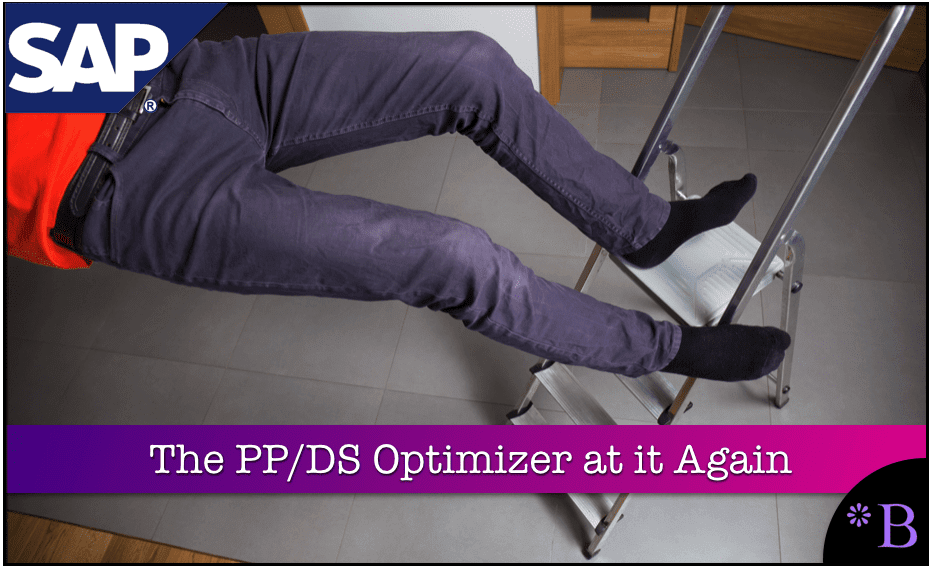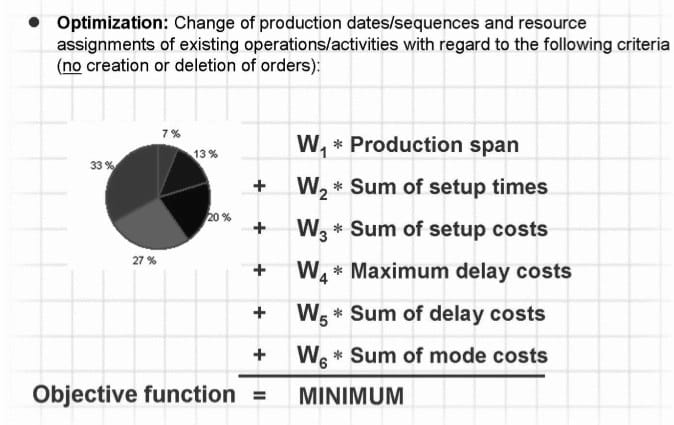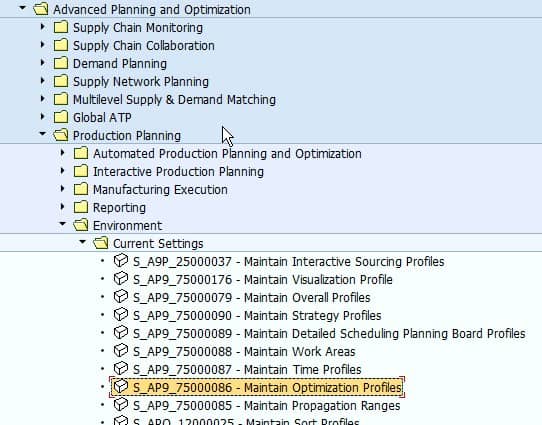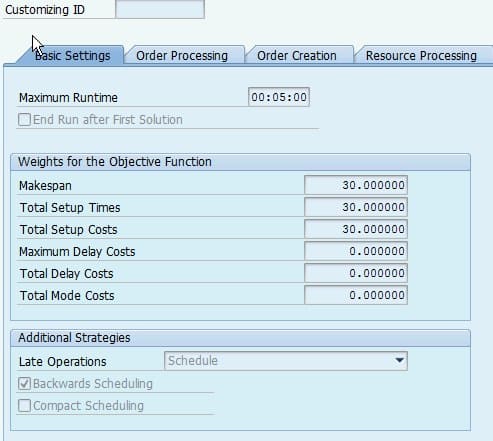How to Understand The Problems with the SAP PP/DS Optimizer
Executive Summary
- The PP/DS optimizer has hypothetical benefits that never are actualized in an implementation. Both SAP and SAP consulting partners have been lying to prospects about the PP/DS optimizer’s implementation history.
- The PP/DS optimizer uses finite and infinite resources.
- Planning orders can be converted into production orders.

Benefits of the PP/DS Optimizer
The benefit of the PP/DS can be valuable only in theory. The idea is that it can be used for reducing sequence dependent setup times, reducing lead times, and to schedule orders according to the priority of the demands. But in fact, the optimizer cannot be implemented. The PP/DS optimizer makes no sense because production planning and scheduling are no managed by costs.
Our References for This Article
If you want to see our references for this article and other related Brightwork articles, see this link.
Notice of Lack of Financial Bias: We have no financial ties to SAP or any other entity mentioned in this article.
Pegging constraints and shelf life is used by the optimizer but adds complexity. The demand at the top-level is considered a soft constraint. It is only possible to prioritize demands in the optimizer profile. The optimizer does not take into account alternative PPMs or PDSs. But it does not matter because you can’t actually constrain in PP/DS as the optimizer does not work.
The optimizer profile contains controls over the following:
- Horizon and begin
- Weights of the target function and the optimization algorithm and runtime
- Order selection
- Backward pegging? (one of the most powerful settings in PP/DS)
- Use of finite resources
- Prioritization
- Backward scheduling
- The target function for the optimizer contains the criteria
Lead time for operations
- Setup times
- Setup Costs
- Average lateness
- Maximum lateness
Each of these is then weighed. The relative weighs determine the solution.

In the optimization profile, the runtime and weightings can be changed interactively before the optimization run.
You decide the potential for the quality of the solution by setting the runtime for the optimization. How you weight optimization criteria to obtain good solutions is dependent on the scheduling situation and the organizational goals.
Killing the Optimization
Interestingly, as of 4.0, the optimizer can be stopped, and intermediate solutions can be reviewed and used.
Where Can the Optimizer be Called Upon?
The optimizer can be called from the following locations:
- DS Planning Board
- Product Planning Table
- Production Planning Run
But this is only hypothetical. In reality, every client I have seen turns off the optimizer with a few months of going live and goes back to heuristics, which also doesn’t work very well.
Finite or Infinite Production Resources
Resources are considered infinite unless the button “schedule according to the settings in the master data” is set in the order processing view of the optimized profile.
The optimizer considers operations fixed and pegged orders for external procurement (defined in the optimizer profile). Planned delivery time to purchase requisitions is considered if the flag has been set in order selection of the optimizer profile.
Finite or Infinite Calendar Resources
If a calendar resource is used as a handling resource, the goods receipt activities do not consume any capacity, and therefore any number of activities for the optimizer to not increase.
Supply and Demand Dates
Supply dates are regarded as hard constraints, while demand dates are considered soft constraints. If the bottleneck is at the end of the material flow, it is possible to ignore the supply dates of orders on not selected resources with the setting of “no not consider upstream dependencies” in the optimizer profile.
Prioritization
Demands can be prioritized according to their delivery priority, orders according to their order priority and status.
Complexity
The optimizer in PP/DS has been tested up to 200,000 operations.

Setting Costs
The optimizer in PP/DS is driven by costs. These costs are entered here:

There are both costs for activities and costs related to delays. The relative magnitude of the costs controls the optimization. The objective function is to minimize costs.
Converting Planned Orders to Production Orders
This is triggered in APO or SAP ERP. /SAPAPO/RRP7
Triggering the conversion from APO has the advantage that the connection between the deleted planned order and the new production order is considered. The production order is matched with the planned order and the operation dates are kept.
The conversion of the planned order usually has to take place sometime before the scheduled start to provide enough time for the preparation tasks as the printing of the order papers and transport of the components of the resource. This time buffer is modeled by the opening horizon in the PP/DS view of the product master.
Triggering the conversion from APO is only possible for PP/DS orders and not for SNP orders.
Conclusion
PP/DS can’t be used for its optimizer and has great difficulty adding value to companies. It is often kept on life support so that IT does not have to admit that they were ripped off by Deloitte or IBM or whatever other implementing company convinced the company to implement one of the worst applications ever tested by Brightwork Research and Analysis.
PP/SD should be decommissioned if it is installed.